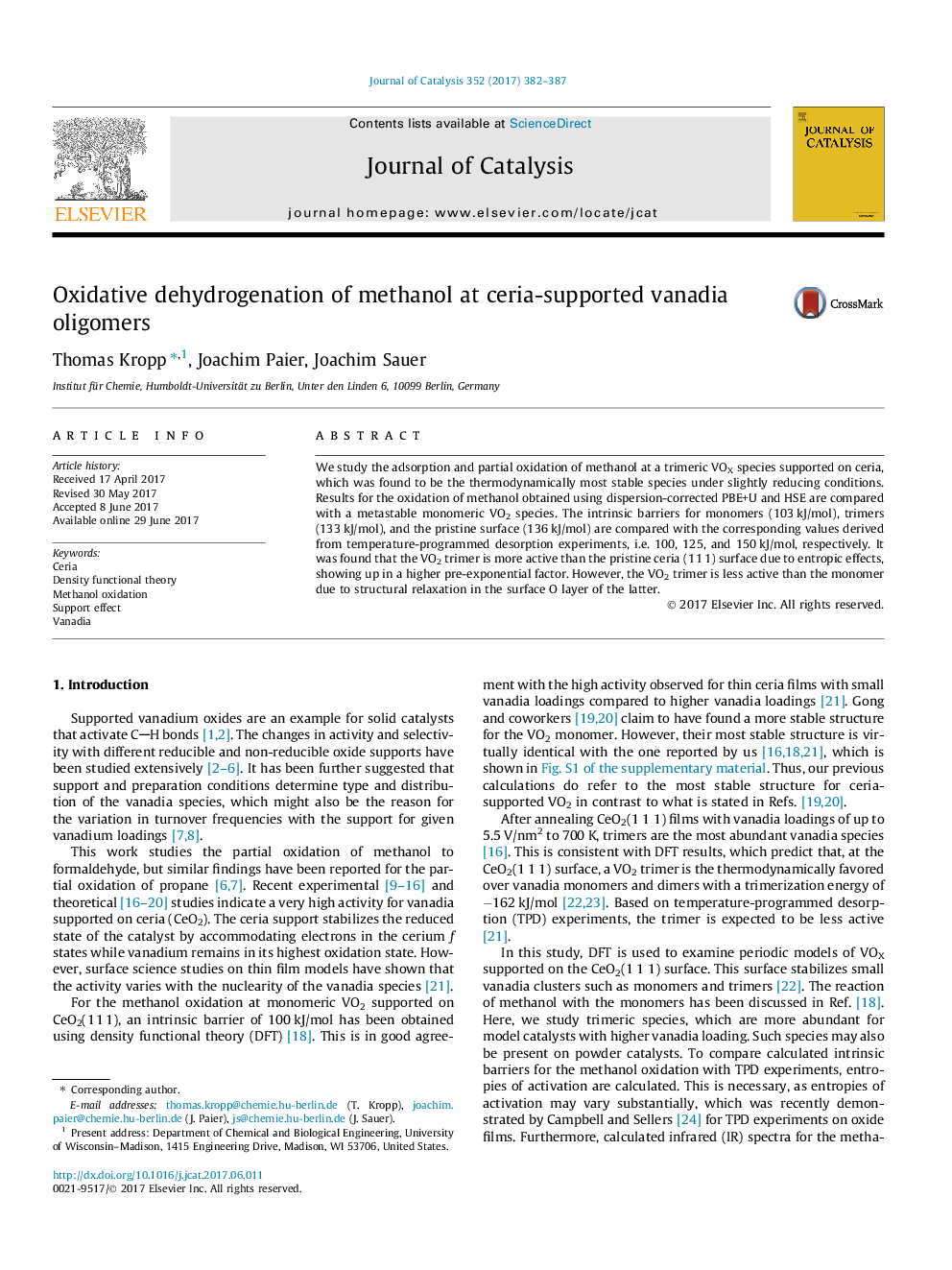| Article ID | Journal | Published Year | Pages | File Type |
|---|---|---|---|---|
| 6455414 | Journal of Catalysis | 2017 | 6 Pages |
â¢Temperature-programmed formaldehyde desorption peaks are assigned to different active sites.â¢For the different active sites, pre-exponential factors vary by two orders of magnitude.â¢At a ceria-supported V3O6 species, methanol is oxidized with an intrinsic barrier of 133 kJ/mol.â¢This ceria-supported V3O6 species is less active than the corresponding VO2 monomer.â¢In contrast, silica-supported vanadia oligomers are more active than the corresponding monomers.
We study the adsorption and partial oxidation of methanol at a trimeric VOX species supported on ceria, which was found to be the thermodynamically most stable species under slightly reducing conditions. Results for the oxidation of methanol obtained using dispersion-corrected PBE+U and HSE are compared with a metastable monomeric VO2 species. The intrinsic barriers for monomers (103Â kJ/mol), trimers (133Â kJ/mol), and the pristine surface (136Â kJ/mol) are compared with the corresponding values derived from temperature-programmed desorption experiments, i.e. 100, 125, and 150Â kJ/mol, respectively. It was found that the VO2 trimer is more active than the pristine ceria (1Â 1Â 1) surface due to entropic effects, showing up in a higher pre-exponential factor. However, the VO2 trimer is less active than the monomer due to structural relaxation in the surface O layer of the latter.
Graphical abstractDownload high-res image (98KB)Download full-size image
